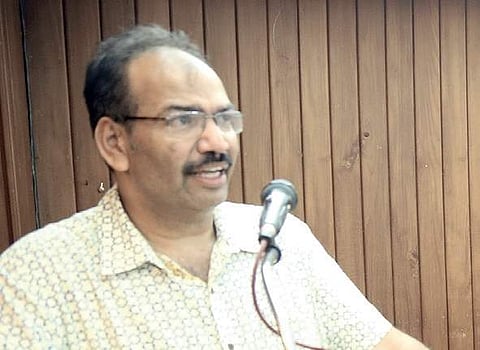

THIRUVANANTHAPURAM: After one of the worst floods in its history, Kerala is facing a Herculean task to rebuild the state. The government has announced a ‘Nava Kerala’ project to realise the dream. It envisages a state that can withstand possible effects of climate change.
In a free-wheeling interview with Express, Muralee Thummarukudy, disaster management expert and chief of Disaster Mitigation and Operations at the United Nations Environment Programme, shared his vision to rebuild the state by reducing the pressure on natural resources, changing the urban land usage and adopting new building practices suitable for the state which will also lead to an inevitable cultural and livelihood shift. Excerpts:
Post-flood, can the state follow the development model it has been pursuing all this while?
Certainly not. For instance, world over we are witnessing a change in the energy consumption patterns. We are still heavily dependent on hydel power stations and big dams for energy requirements at a time when power sector is slowly but steadily shifting to renewable energy. Soon, we will have to decommission our big dams. So there is no point in going ahead with development model revolving around the traditional power generation methods.
Should the state urgently rehabilitate all the flood-affected people from the severely affected places?
We have to rehabilitate them from the vulnerable areas in a phased manner. But that doesn’t mean that all the affected people have to be shifted to safer locations. The state should identify the places that are vulnerable for natural disasters and stop promoting constructions in the region.
How challenging is the task?
It’s not a big task as everybody assumes. First, the state government should stop giving legal validity to the constructions in ecologically vulnerable areas. Then bankers and insurance companies must discourage such activities by stopping financing and insurance coverage. Certainly, there will be positive results in a few years.
The state has to rehabilitate 19,000-odd flood affected families. Should the state look at flat-like structures to rehabilitate them?
Not necessary. The state government should hold a survey to find out how many houses or flats are lying vacant in the state. Then we can accommodate the people by judiciously taking over these properties. Uncontrolled constructional activities cannot be supported, be it for public or private usage.
But, how can the state restrict constructions?
We have to first reduce the pressure on natural resources and there should be a centralised control over natural resources. The state should also put a tax on its resources as well as introducing a tax slab in proportion to the demand with a view to reduce the demand for new houses.
Can you please explain?
Around 50 per cent in Europe never own a house in their life time. If you check the occupancy rate of the buildings in Kakkanad in Kochi, you will be shocked. Why should we entertain constructional activities when there is so low occupancy rate? The speculative market revolving around land and properties is increasing the pressure on natural resources. So to put a curb, it is necessary to bring the constructional activities under a tax slab. To cite an example, in Singapore, you can buy car for 30,000 dollar; but to get eligibility certificate to own a car, you have to shell out 1 lakh dollar.
When we restrict or change the urban and rural land usage pattern, would it affect the agriculture practices we have been following over the years?
Certainly. Agriculture is necessary in our day-to-day life. But we have to take into account its viability as a business and sustainable. One who buys an acre of rubber plantation by spending `1 crore or `2 crore, will not get the benefit in proportion to one’s investment.
The logic is simple. This same land is available for Rs 10,000 per cent in third world countries. The person who buys the land at this exorbitant rate can’t compete with the produces from these third world countries in the international market. So, the state has to classify and consolidate its agriculture lands and follow a farming practice suitable to compete with the international market.
Tourism is one of the major revenue making sectors of the state. Has the state tapped its potential to the hilt?
The dairy farming in Switzerland is not aimed at achieving milk sufficiency alone, but it plays a major role in attracting tourists. For 67 million people in France, their annual tourist footfall is about 87 million. For 3.4 crore people in Kerala, foreign tourist inflow stands at 10 lakh. Kerala has miles to go in tapping the potential of the tourism sector. The state should use its farm land to generate farm income as well as agro-tourism revenue.